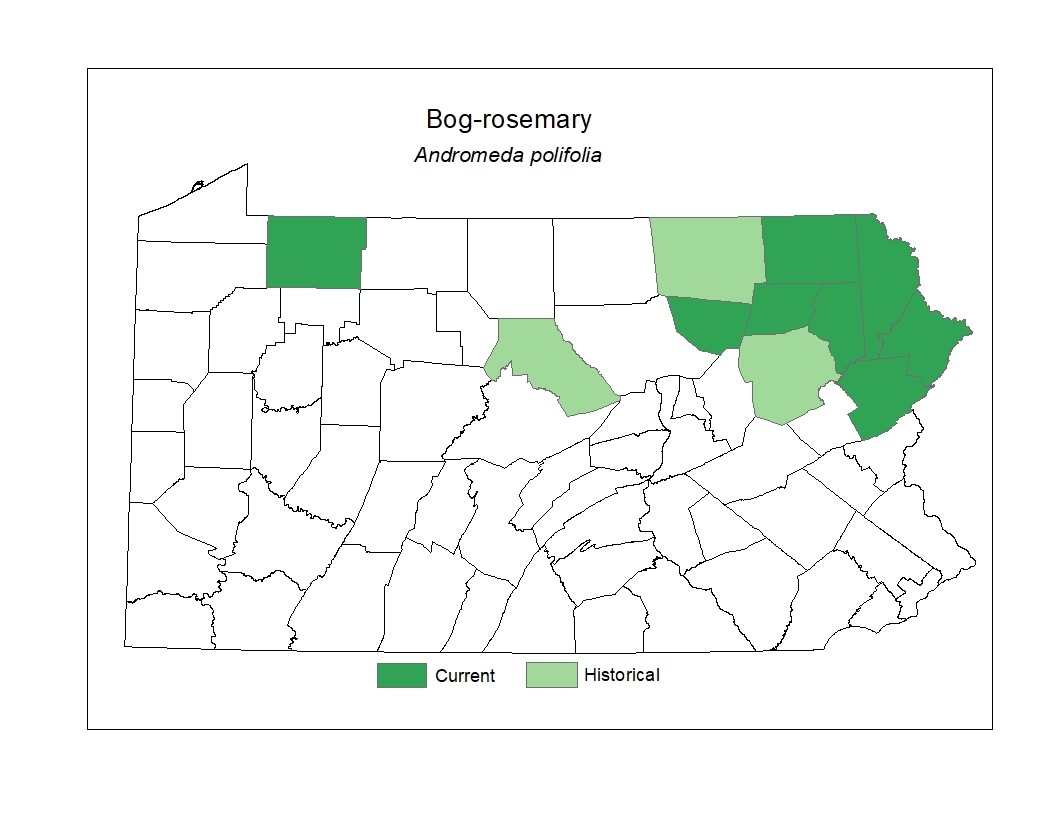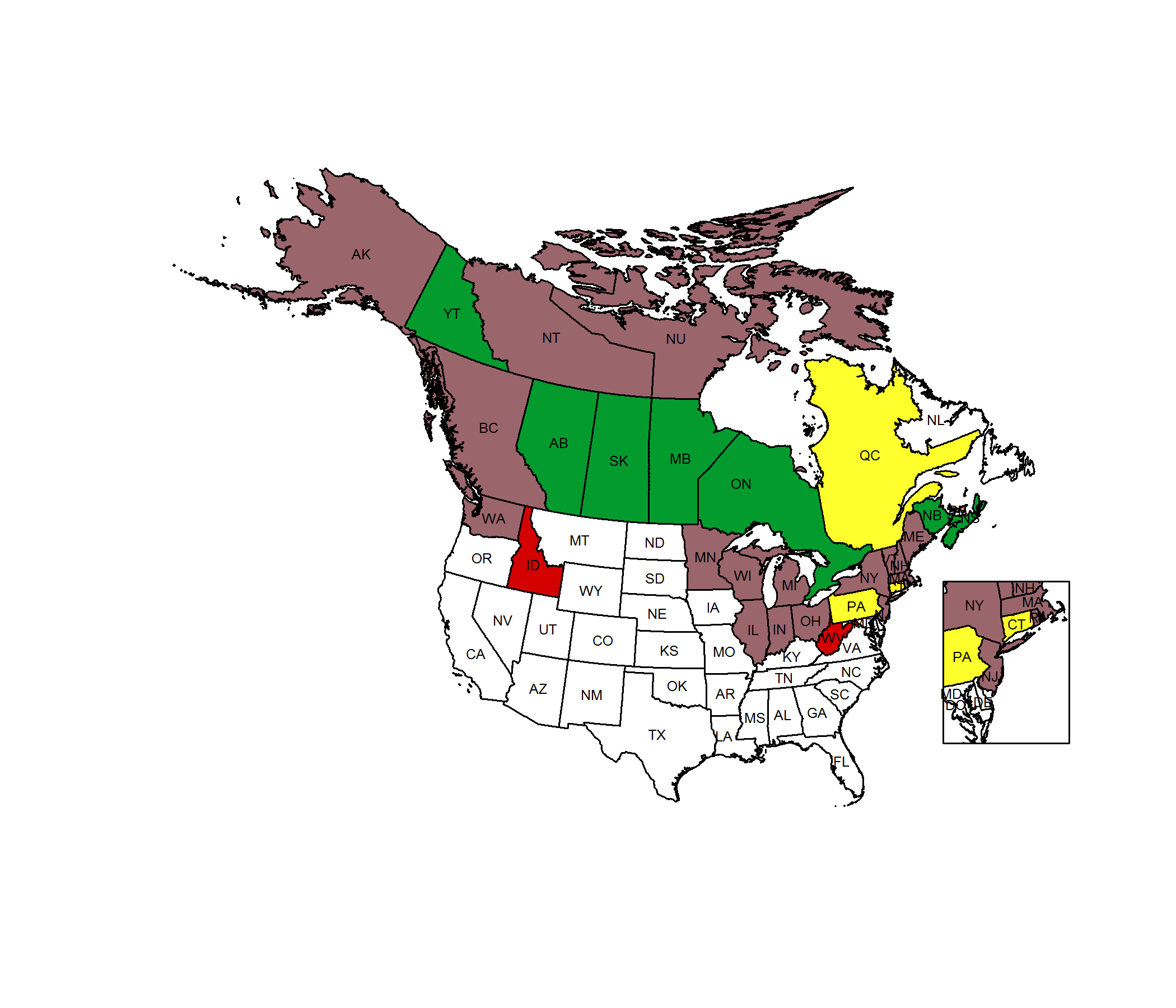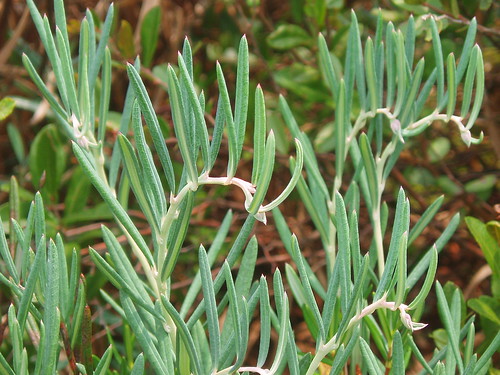 Species Factsheets
Species Factsheets
Andromeda polifolia
Bog-rosemary
State Status: Pennsylvania Rare (PR)
PBS Status: Pennsylvania Rare (PR)
Federal Status:
Global Rank: G5
![]() rank interpretation
rank interpretation
State Rank: S3
Description
Bog-rosemary is an evergreen shrub that may grow up to 0.5 m in height, but is often shorter and even dwarfed in some situations. The branchlets are hairless and whitened. The leaves are alternately arranged, thick in texture, short-stalked, linear to narrowly oblong in shape, to 5 cm in length and 5 mm in width, usually pointed at the tip, the margins untoothed and rolled under, the upper side bluish-green and the lower side pale green or whitened. The white or pink flowers, which appear in May and June, are aggregated in small curled clusters at the end of the branchlets, with the individual flower having the petals united (resembling a small globe or urn) and 5-6 mm in length. The fruit is a dry capsule about 5 mm in diameter that splits into 5 parts and releases the minute seeds.
Rank Justification
Vulnerable in the nation or state due to a restricted range, relatively few populations (often 80 or fewer), recent and widespread declines, or other factors making it vulnerable to extirpation.
Habitat
The species grows in bogs, typically on floating sphagnum mats that surround bog pools.
Survey Dates
Flowers in May
Distribution
Bog-rosemary ranges from Newfoundland to Saskatchewan and south into New Jersey, West Virginia, and the Great Lakes states. In Pennsylvania, it represents a northerly species and has been documented historically in the northern, particularly the northeastern, counties.

Management
The viability of populations of Bog-rosemary and its habitat may be enhanced by creating buffers and protecting the natural hydrology around bogs. Bog-rosemary is an indicator of bog habitats that feature various orchids, insectivorous plants such as sundew, bladderwort, and pitcher plant, and other interesting species.
Conservation Status Map


NatureServe. 2017. NatureServe Explorer: An online encyclopedia of life [web application]. Version 7.1. NatureServe, Arlington, Virginia. Available https://explorer.natureserve.org.
- NatureServe. 2018. NatureServe Explorer: An online encyclopedia of life [web application]. Version 7.1. NatureServe, Arlington, Virginia. Available at https://www.natureserve.org/explorer
- Pennsylvania Natural Heritage Program. 2018.
- Rhoads, A.F. and W.M. Klein, Jr. 1993. The Vascular Flora of Pennsylvania. American Philosophical Society, Philadelphia, Pennsylvania. Rhoads, A.F. and T.A. Block.
- 2007. The Plants of Pennsylvania: An Illustrated Manual. 2nd edition. University of Pennsylvania Press, Philadelphia, Pennsylvania.







